
club car owner’s manual
Welcome to the Club Car Owner’s Manual, your comprehensive guide to understanding and maintaining your vehicle. This manual provides essential information on safety, operation, and maintenance to ensure optimal performance and longevity of your Club Car. By following the guidelines outlined, you can enhance your overall user experience, troubleshoot common issues, and keep your vehicle in top condition. Refer to this manual regularly for detailed instructions and tips tailored to your specific needs.
1.1 Importance of the Owner’s Manual
The Club Car Owner’s Manual is a vital resource for owners, providing detailed insights into vehicle operation, safety, and maintenance. It ensures proper usage, maximizing performance and longevity. By following the manual, owners can avoid common mistakes, reduce risks, and maintain warranty compliance. Regularly referring to it helps troubleshoot issues, understand safety protocols, and perform essential maintenance. This guide is indispensable for enhancing your Club Car experience, offering clear instructions tailored to your needs. Keep it handy for quick reference and to ensure your vehicle operates at its best.
1.2 What to Expect in the Manual
This manual is structured to provide clear, concise information on Club Car operation, maintenance, and troubleshooting. It includes detailed sections on safety precautions, routine maintenance schedules, and diagnostic tips for common issues. You’ll find guidelines for proper driving techniques, battery care, and tire maintenance, as well as sections on customization and environmental considerations. The manual also offers operational guidelines, storage tips, and warranty details, ensuring you have all the resources needed to keep your Club Car running smoothly and safely. Refer to it regularly for optimal performance and longevity.

History and Evolution of Club Car Vehicles
Club Car, founded in 1958, is renowned for its reliable and innovative golf and utility vehicles. Over decades, the company has expanded its product line, embracing eco-friendly solutions while maintaining a commitment to quality and performance.
2.1 Brief Overview of Club Car
Club Car, established in 1958, is a leading manufacturer of golf cars, utility vehicles, and personal transportation solutions. Known for reliability and innovation, the company has expanded its product line to meet diverse needs, from recreational use to industrial applications. As part of the Ingersoll Rand family, Club Car continues to prioritize durability and performance, offering vehicles that cater to both individual and commercial requirements. Their commitment to quality has made them a trusted name in the industry, with a focus on advancing sustainable and efficient mobility solutions.
2.2 Development of Golf Cars and Utility Vehicles
Club Car’s journey began with the production of simple golf cars, evolving over decades to create versatile utility vehicles. The introduction of the iconic Precedent golf car in 2004 marked a significant milestone, setting new standards for performance and design. Utility vehicles soon followed, offering multi-functional capabilities for industrial and commercial use. Innovations like electric powertrains and ergonomic designs have positioned Club Car as a pioneer in sustainable and practical transportation solutions, catering to both recreational and professional needs with unmatched reliability and efficiency.

Safety Precautions and Guidelines
Safety is paramount when operating your Club Car. Always wear seatbelts, ensure passengers are secure, and follow all warning labels. Adhere to speed limits and drive responsibly to avoid accidents. Regular maintenance and proper vehicle handling are essential for ensuring a safe and enjoyable experience. Familiarize yourself with emergency procedures and never overlook safety protocols outlined in the manual.
3.1 General Safety Information
Your safety and the safety of others are critical when operating a Club Car. Always read this manual thoroughly to understand proper operation and safety practices. Wear seatbelts and ensure all passengers are secured before moving. Never operate the vehicle under the influence of alcohol or drugs. Be aware of your surroundings, follow traffic rules, and avoid hazardous conditions. Familiarize yourself with warning labels and symbols, as they provide crucial safety information. Regularly inspect the vehicle to ensure all safety features are functioning properly. Safe driving habits and adherence to guidelines will help prevent accidents and ensure a enjoyable experience.
3.2 Warning Labels and Symbols
Warning labels and symbols are essential for safe operation of your Club Car. These visual cues indicate potential hazards, proper operating procedures, and maintenance guidelines. Always take the time to read and understand the meaning of each label and symbol. They are designed to protect you and others from injury or damage. Ignoring these warnings can lead to serious consequences. Familiarize yourself with the symbols and labels located on your vehicle and refer to this manual for detailed explanations. Your safety depends on adhering to the information provided by these critical indicators.
3.3 Proper Driving Techniques
Proper driving techniques are crucial for safe and efficient operation of your Club Car. Always accelerate smoothly and maintain appropriate speeds for the terrain and conditions. Be aware of your surroundings, including pedestrians and obstacles. Avoid sudden movements and sharp turns, as they can destabilize the vehicle. Ensure a clear path before moving forward or reversing. Use brakes gently to prevent skidding. Keep the vehicle balanced, especially on slopes, and never exceed weight limits. By following these guidelines, you can ensure a safe and enjoyable driving experience for yourself and others.
Maintenance and Service Schedule
Regular maintenance is crucial for optimal performance and longevity. Follow the recommended service schedule for routine checks, battery care, and tire maintenance to ensure reliability and safety.
4.1 Routine Maintenance Checks
Routine maintenance is essential for ensuring your Club Car operates efficiently and safely. Regularly inspect brakes, hydraulic systems, and electrical connections to prevent wear and tear. Check for fluid levels, clean or replace air filters, and ensure all moving parts are properly lubricated. Refer to the manual for specific schedules and guidelines tailored to your vehicle’s model. Addressing these checks promptly helps avoid mechanical issues and extends the lifespan of your Club Car. Always follow recommended procedures to maintain performance and reliability.
4.2 Battery Care and Maintenance
Proper battery care is crucial for your Club Car’s performance and longevity. Regularly inspect terminals and cables for corrosion, ensuring clean and secure connections. Check electrolyte levels (if applicable) and maintain the recommended fluid level. Charge batteries fully after each use to prevent deep discharge. Avoid overcharging, as it can reduce battery life. Store batteries in a cool, dry place during extended periods of inactivity. Follow the manual’s guidelines for equalization and maintenance to optimize battery health and ensure reliable operation.
4.3 Tire Pressure and Maintenance
Proper tire pressure and maintenance are essential for your Club Car’s performance, safety, and efficiency. Always check tire pressure when the tires are cold, using the pressure gauge to match the manufacturer’s recommended levels. Regularly inspect tires for wear, damage, or uneven tread. Maintain proper wheel alignment and balance to ensure even wear and prevent vibration. Clean tires regularly to remove debris and prevent damage. Refer to your manual for specific pressure recommendations and guidelines for seasonal adjustments or load variations to ensure optimal handling and durability.
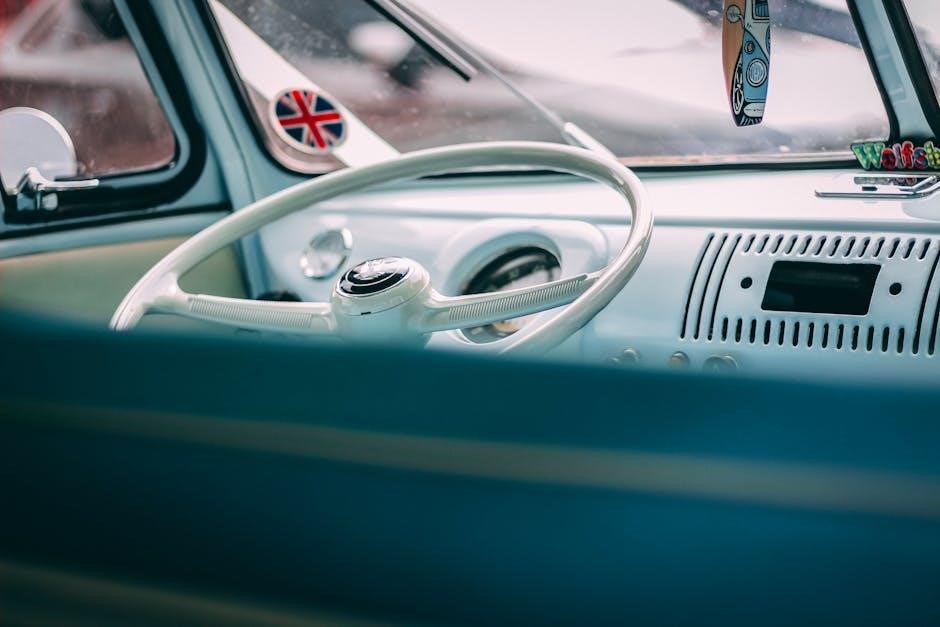
Understanding the Club Car Owner’s Manual
The Club Car Owner’s Manual is a comprehensive guide designed to help you operate, maintain, and troubleshoot your vehicle effectively. It covers essential topics like safety, maintenance schedules, and troubleshooting tips, ensuring you have all the information needed to keep your Club Car in optimal condition. Use this manual as your go-to resource for understanding your vehicle’s features, addressing common issues, and maximizing its performance and longevity.
5.1 Structure and Organization
The Club Car Owner’s Manual is structured to provide clear and easy access to information. It is divided into logical chapters, each focusing on specific topics such as safety, maintenance, and troubleshooting. The manual begins with an introduction, followed by detailed sections on vehicle history, operational guidelines, and customization options. Each chapter is further broken down into sub-sections, ensuring a user-friendly experience. Visual elements like headings, subheadings, and bullet points enhance readability. A comprehensive table of contents and index allow quick navigation to desired topics, making the manual an indispensable resource for Club Car owners.
5.2 Key Sections to Focus On
For optimal use of your Club Car, prioritize key sections in the manual. The Safety Precautions chapter is crucial for understanding hazard warnings and proper driving techniques. Maintenance and Service Schedule details routine checks and battery care to ensure longevity. Troubleshooting Common Issues helps diagnose and resolve problems efficiently. Operational Guidelines provide pre-operation checks and driving tips, while Customization and Upgrades outline approved modifications. Familiarizing yourself with these sections ensures safe, efficient, and enjoyable use of your vehicle, maximizing performance and lifespan while adhering to manufacturer recommendations.
5.3 How to Use the Manual Effectively
To maximize the benefits of your Club Car Owner’s Manual, start by reviewing the table of contents and index to locate relevant sections quickly. Use the search function for specific topics and refer to the troubleshooting guide for common issues. Pay attention to warning labels and safety information to ensure safe operation. Regularly update your knowledge by revisiting the manual, especially after software updates or vehicle modifications. This approach ensures you leverage the manual as a trusted resource for maintaining and enjoying your Club Car.

Troubleshooting Common Issues
Identify and resolve common problems like battery drained quickly or electrical faults. Refer to the manual’s troubleshooting guide for step-by-step solutions and diagnostic tips to restore functionality.
6.1 Diagnosing Battery Problems
Diagnosing battery issues in your Club Car is crucial for maintaining performance. Check for signs like slow acceleration or dim headlights, which may indicate a drained or faulty battery. Ensure the charger is functioning correctly and connections are clean. Measure voltage levels; a fully charged battery should read around 37.5 volts. If issues persist, refer to the troubleshooting section for detailed steps or consult an authorized service center to address deeper electrical problems effectively.
6.2 Solving Electrical System Faults
Identifying electrical system faults in your Club Car begins with checking for signs like flickering lights or inconsistent power. Start by inspecting all connections for cleanliness and tightness. Use a multimeter to test voltage levels and identify short circuits or open wires. If issues persist, consult the wiring diagram in your manual or contact an authorized technician. Regularly updating your electrical system and ensuring proper grounding can prevent many faults. Always follow safety guidelines when working with electrical components to avoid further damage or safety hazards.
6.3 Addressing Mechanical Issues
Mechanical issues with your Club Car can often be resolved through routine maintenance and inspections. Regularly check brakes, suspension, and steering components for wear. Inspect belts and hoses for cracks or damage. Lubricate moving parts as recommended to prevent friction-related problems. If unusual noises or vibrations occur, identify the source promptly. Always consult the manual for torque specifications and adjustment procedures. Addressing mechanical issues early can prevent more severe damage and ensure smooth operation. If unsure, contact an authorized Club Car technician for professional assistance.
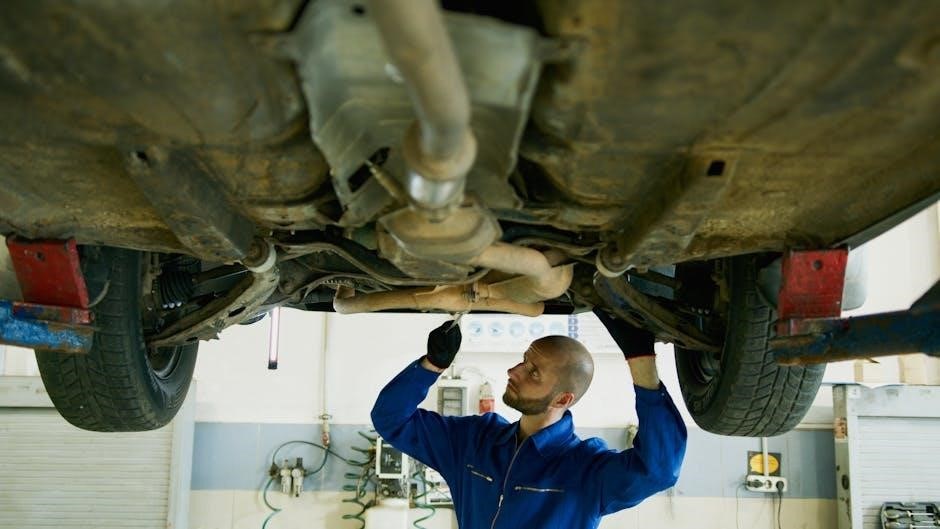
Operational Guidelines for Club Car Vehicles
Always follow safe driving practices, adhere to load capacity limits, and maintain proper vehicle control. Regularly inspect brakes, tires, and steering for optimal performance. Follow guidelines for transporting passengers and cargo safely, and familiarize yourself with local regulations for operating your Club Car.
7.1 Pre-Operation Checks
Before operating your Club Car, conduct a thorough pre-operation check to ensure safety and functionality. Inspect tires for proper pressure and wear, check brakes for responsiveness, and verify the battery charge level. Ensure all controls, including steering and acceleration, are functioning correctly. Look for any visible damage or fluid leaks. Always wear appropriate safety gear and familiarize yourself with local regulations. Consult the manual for specific guidelines tailored to your vehicle model. Regular checks help prevent issues and ensure a smooth, safe driving experience. Stay proactive to maintain your Club Car’s performance and longevity.
7.2 Driving Tips and Best Practices
Always maintain a safe speed and be aware of your surroundings while driving your Club Car. Use brakes smoothly and avoid sudden stops. Keep a safe distance from other vehicles and pedestrians. Ensure all passengers are seated securely before moving. Avoid sharp turns and drive cautiously on uneven terrain. Keep loose items secure to prevent them from shifting during operation. Be mindful of weight distribution and avoid overloading the vehicle. Follow local regulations and respect noise restrictions. Regularly check tire pressure and brakes for optimal performance. Safe driving practices enhance your experience and ensure the longevity of your Club Car.
7.3 Transporting the Vehicle Safely
Transporting your Club Car requires careful planning to ensure safety and prevent damage. Always use a sturdy trailer or transport vehicle designed for the weight of your Club Car. Secure the vehicle firmly with straps or tie-downs to prevent movement during transit. Ensure the parking brake is engaged and the vehicle is in neutral gear. Protect the vehicle from weather conditions by covering it if necessary. Distribute weight evenly on the trailer to maintain stability. Double-check all tie-downs before moving and avoid sudden acceleration or braking. Consider professional transport for long distances to ensure safety and compliance with local regulations.
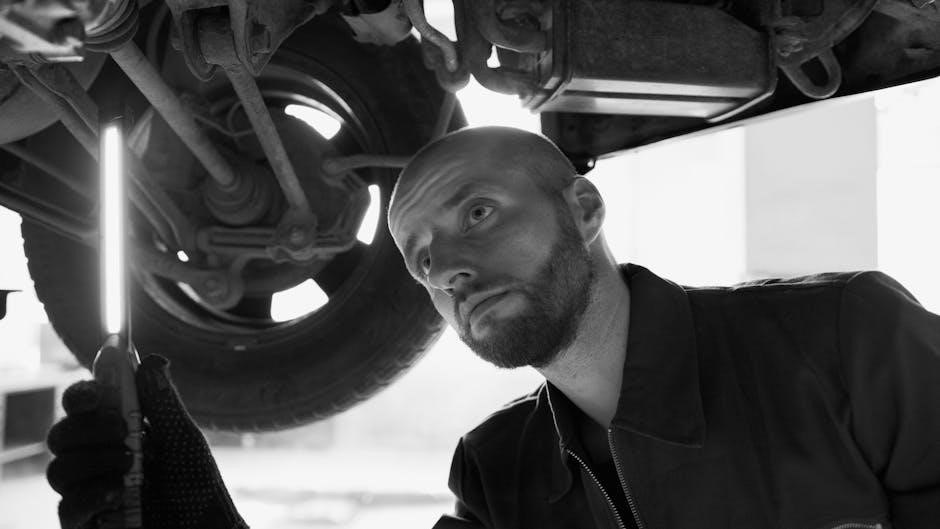
Customization and Upgrades
Customize your Club Car to enhance performance and style while ensuring safety and warranty compliance. Explore approved accessories and upgrades tailored to your vehicle’s specifications and needs.
8.1 Approved Accessories and Modifications
Approved accessories and modifications are designed to enhance your Club Car’s performance and style while maintaining safety and warranty compliance. Always consult the manual for a list of authorized upgrades. Ensure all modifications meet Club Car’s specifications to avoid voiding your warranty. Popular upgrades include custom seats, storage solutions, and performance enhancements. Contact Club Car support or visit their website for a comprehensive guide to approved accessories. Proper installation by authorized service centers is recommended to ensure reliability and safety. Maintain your vehicle’s integrity with approved parts and modifications.
8.2 Upgrading Performance and Features
Upgrading your Club Car’s performance and features can enhance its capabilities and customize it to your needs. Always consult the owner’s manual before making any modifications to ensure compatibility and safety. Popular upgrades include high-torque motors, advanced controllers, and suspension enhancements. However, using unauthorized parts can void your warranty and compromise safety. Stick to Club Car-approved upgrades and consider professional installation for optimal results. Prioritize reliability and stability while boosting performance to maintain your vehicle’s integrity and longevity;
8.3 Maintaining Warranty Compliance
Maintaining warranty compliance is crucial to ensure your Club Car remains covered under the manufacturer’s warranty. Always use Club Car-approved parts and accessories, as unauthorized modifications can void your warranty. Regular maintenance, as outlined in the owner’s manual, is essential to uphold warranty terms. Keep detailed records of all service and repairs performed by authorized dealers. Failure to adhere to these guidelines may result in denied claims. Protect your investment by following the recommended maintenance schedule and using genuine parts for any upgrades or repairs.
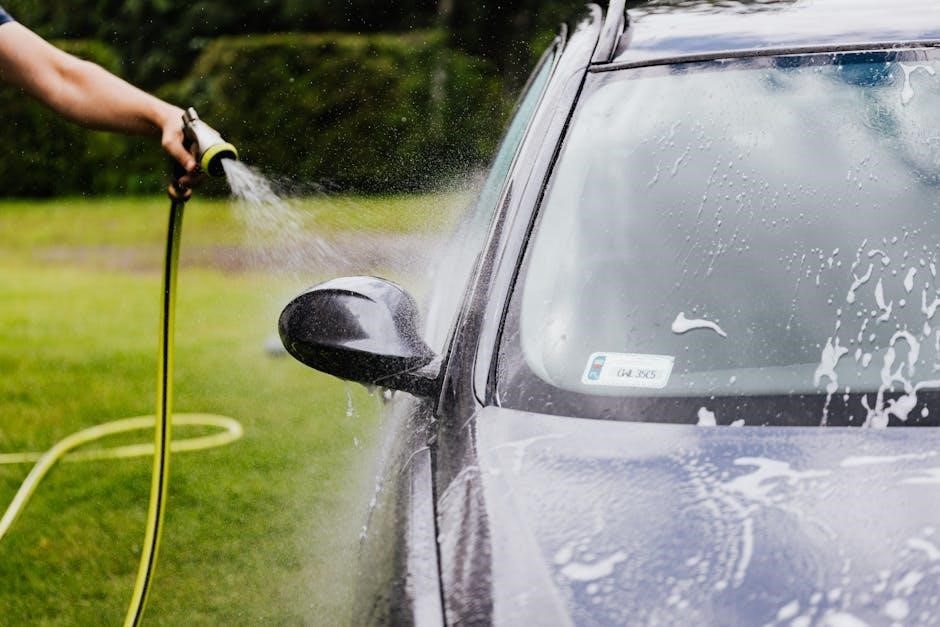
Environmental Considerations
This section covers eco-friendly driving practices, proper disposal of hazardous materials, and energy efficiency tips to promote sustainability while operating your Club Car vehicle.
9.1 Eco-Friendly Driving Practices
Adopting eco-friendly driving practices enhances your Club Car’s efficiency and reduces environmental impact. Start with smooth acceleration to avoid battery drain. Maintain steady speeds on flat terrains to conserve energy. Reduce unnecessary load by carrying only essentials to prevent energy waste. Keep tires properly inflated to minimize resistance and energy use. Avoid prolonged idling to save battery life and reduce wear. Brake gently to preserve energy and extend battery life. Use appropriate gear settings for different terrains to optimize performance. Regular maintenance, such as cleaning connections and ensuring battery health, further supports eco-friendly operation. These practices not only benefit the environment but also prolong your vehicle’s lifespan and ensure a smoother, more efficient ride.
9.2 Proper Disposal of Hazardous Materials
Proper disposal of hazardous materials from your Club Car is crucial for environmental protection. Batteries, oils, and other chemicals must be disposed of responsibly. Check local regulations for designated disposal facilities. Never discard hazardous materials in regular trash or water systems. Use approved containers to transport waste safely. Many auto repair shops and recycling centers accept these materials for proper handling. Always consult your Club Car dealer or local authorities for guidance on compliant disposal practices. This ensures safety for both the environment and your community.
9.3 Energy Efficiency Tips
Optimizing energy efficiency is key to extending your Club Car’s battery life and reducing operational costs. Maintain the recommended tire pressure to minimize energy consumption. Avoid aggressive acceleration and braking, as they drain power faster. Keep your vehicle’s speed consistent, especially on flat terrains. Regularly check and clean connections to ensure efficient energy flow. Additionally, avoid overcharging batteries, as this can reduce their lifespan. By adopting these practices, you can enhance your Club Car’s performance while contributing to a more eco-friendly operation.

Warranty and Support Information
Your Club Car is backed by a comprehensive warranty program. For details on coverage, visit the official Club Car website or contact authorized service centers near you.
10.1 Understanding Your Warranty
Club Car offers a comprehensive warranty program designed to protect your investment. Your warranty coverage varies by vehicle model and year, typically including parts and labor for defective components. It’s essential to review the terms and conditions to understand what is covered and for how long. Proper maintenance, as outlined in the manual, is often required to maintain warranty validity; For specific details, refer to the warranty section in your manual or contact an authorized Club Car dealer.
10;2 Contacting Club Car Support
For assistance with your Club Car vehicle, contact our dedicated support team through the official website or authorized dealers. Use the provided contact information to reach customer service for inquiries, troubleshooting, or parts orders. Support is available during business hours, and online resources, such as FAQs and manuals, are accessible 24/7. Ensure to have your vehicle’s serial number ready for efficient support. Visit the Club Car website for direct contact options, including phone numbers, email, and live chat, to resolve your queries promptly and effectively.
10.3 Finding Authorized Service Centers
To locate an authorized Club Car service center, visit the official Club Car website and use the dealer locator tool. Enter your location to find nearby authorized service providers. These centers are equipped with trained technicians and genuine parts to ensure optimal service quality. Contacting Club Car support can also direct you to the nearest authorized center. Regular maintenance at these centers guarantees compliance with warranty terms and ensures your vehicle operates at peak performance. Always verify the center’s authorization to maintain your vehicle’s reliability and safety standards.
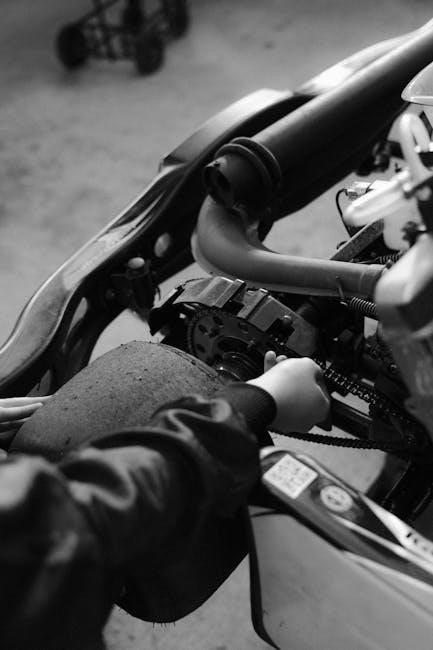
Storage and Transportation Tips
Properly storing and transporting your Club Car is crucial for maintaining its condition. Clean and dry the vehicle, store in a protected area, and secure it during transport.
11.1 Proper Storage Conditions
Store your Club Car in a dry, well-ventilated area to prevent moisture buildup. Ensure the vehicle is clean and free of debris. Disconnect the battery and secure it in an upright position. Use a breathable cover to protect from dust and outdoor elements. Avoid storing in direct sunlight or extreme temperatures. Check the vehicle periodically during storage to ensure all components remain in good condition. Proper storage helps maintain your Club Car’s performance and longevity, ensuring it remains ready for use when needed.
11.2 Securing the Vehicle for Transport
When transporting your Club Car, ensure it is properly secured to prevent damage. Use a sturdy trailer or transport vehicle with tie-down straps. Position the vehicle centered on the trailer and secure it firmly at all four corners. Protect the battery by disconnecting it and securing it in an upright position. Cover the vehicle to shield it from dust and debris during transit. Always engage the parking brake and consider using additional safety straps for added stability. Proper securing ensures safe transportation and protects your Club Car from potential harm.
11.3 Long-Term Storage Recommendations
For long-term storage, store your Club Car in a dry, cool place to prevent rust and moisture damage. Clean the vehicle thoroughly before storage to avoid dirt buildup. Disconnect the battery and charge it periodically to maintain its health. Use tire blocks or inflate tires properly to prevent flat spots. Cover the vehicle with a breathable cover to protect it from dust and debris. Regularly inspect the vehicle during storage to address any potential issues early. Proper storage ensures your Club Car remains in excellent condition for future use.
Frequently Asked Questions (FAQs)
This section addresses common questions about maintenance, troubleshooting, and usage, providing clear solutions and guidance for Club Car owners to ensure optimal performance and longevity of their vehicles.
12.1 Common Questions About Maintenance
Owners often inquire about battery care, routine checks, and troubleshooting. Regular maintenance ensures longevity and performance. Check tire pressure monthly, clean battery terminals, and follow the recommended service schedule. Addressing issues early prevents costly repairs. Refer to the manual for detailed maintenance timelines and procedures. Understanding these basics helps maintain your Club Car’s optimal condition and extends its lifespan. Always follow safety guidelines during maintenance to avoid potential hazards. Keep your vehicle running smoothly by adhering to these essential tips and guidelines outlined in the manual.
12.2 Troubleshooting FAQs
Common issues include battery problems, electrical faults, and mechanical malfunctions. Start by checking connections and ensuring proper charging. For electrical issues, inspect fuses and wiring. If the vehicle doesn’t start, verify the battery terminals are clean and secure. Addressing these problems early can prevent further damage. Refer to the manual for specific troubleshooting steps tailored to your model. Regular maintenance often resolves many common issues, ensuring your Club Car runs smoothly and efficiently. Always follow safety guidelines when diagnosing and repairing problems.
12.3 General Inquiries About Usage
Common questions about usage include optimal driving practices, customization options, and storage tips. Users often inquire about how to maximize their vehicle’s performance and longevity. Customization options allow for personalizing the Club Car to meet specific needs. Proper storage conditions ensure the vehicle remains in good condition when not in use. Environmental considerations, such as eco-friendly driving practices, are also frequently discussed. Refer to the manual for detailed guidelines on these topics to ensure safe and efficient operation of your Club Car.
13.1 Final Tips for Club Car Owners
Always review your Club Car Owner’s Manual for specific guidance tailored to your vehicle. Regularly inspect tire pressure, battery levels, and brakes for optimal performance. Store your Club Car in a dry, shaded area to prevent damage. Follow eco-friendly practices to reduce your environmental impact. Ensure all modifications comply with warranty terms to maintain coverage. By adhering to these tips, you’ll extend your vehicle’s lifespan and enjoy a safe, enjoyable experience. Proper maintenance and responsible usage are key to getting the most out of your Club Car.
13.2 Encouragement to Refer to the Manual Regularly
Referencing your Club Car Owner’s Manual regularly ensures you stay informed about safety, maintenance, and optimal usage. It helps prevent issues, prolongs your vehicle’s lifespan, and keeps you aware of the latest updates. Regular reviews allow you to stay familiar with operational guidelines, troubleshooting tips, and eco-friendly practices. Make the manual a trusted companion for maintaining your Club Car effectively. By doing so, you’ll ensure a safe, enjoyable, and efficient experience while preserving your investment for years to come.